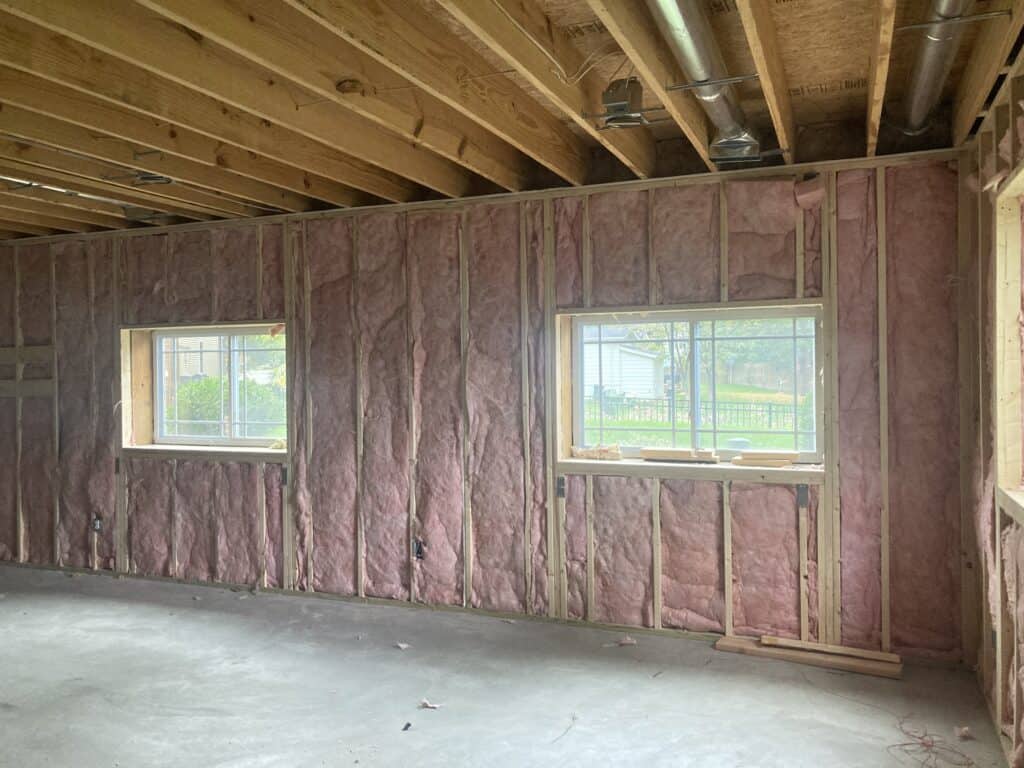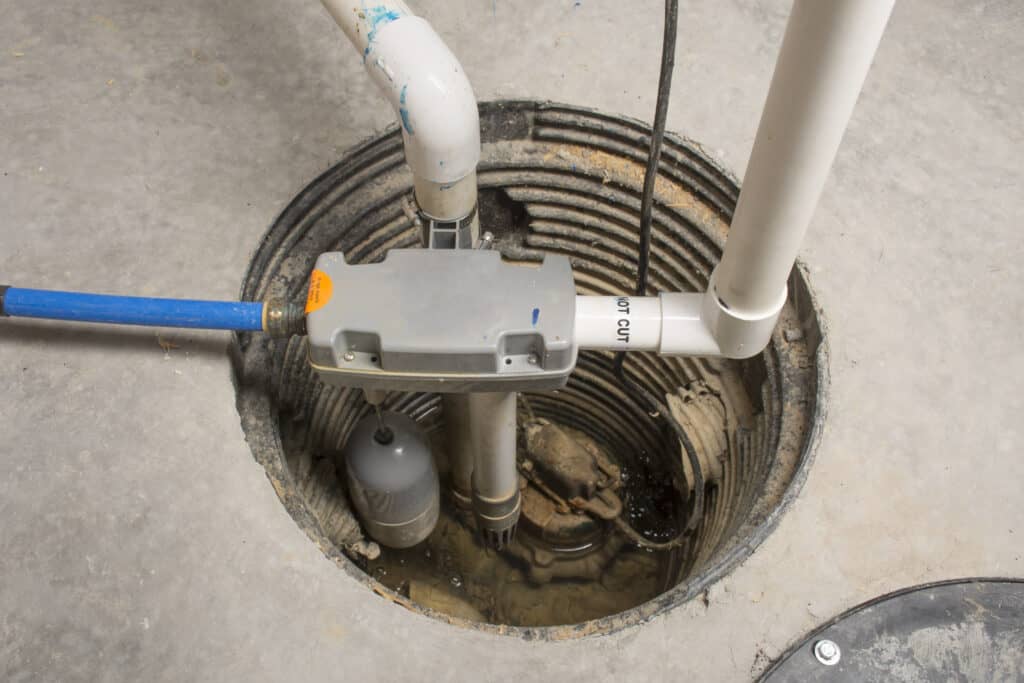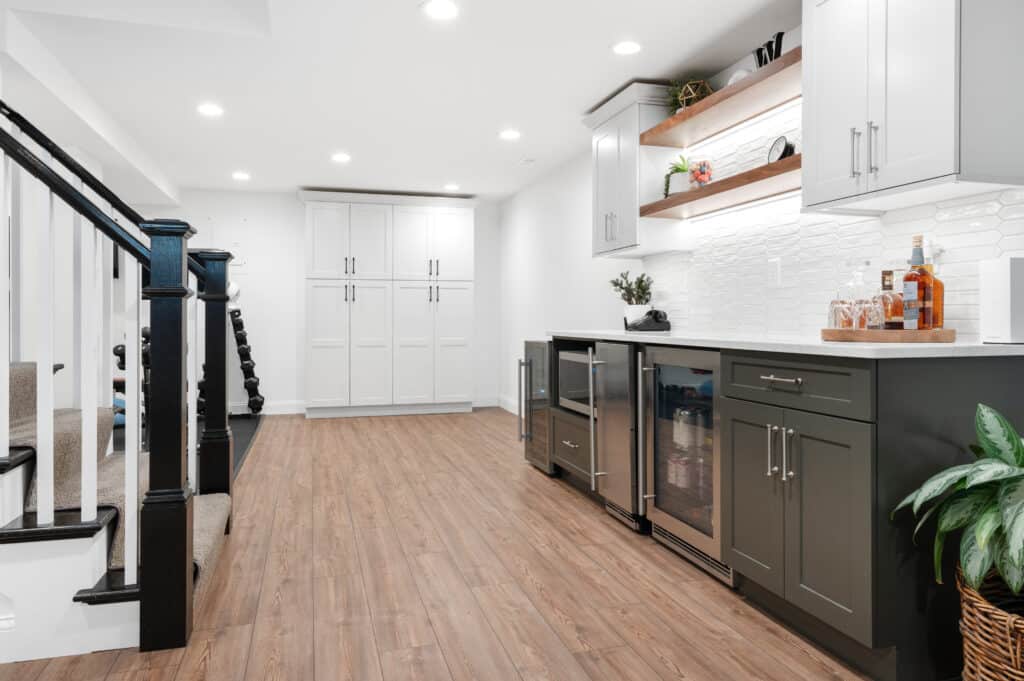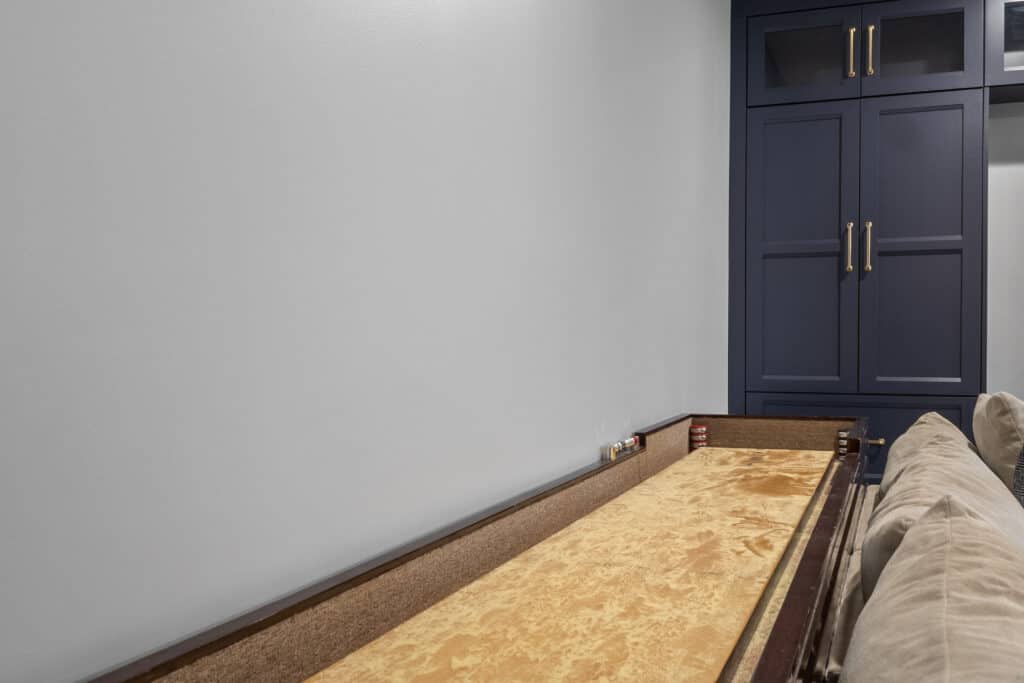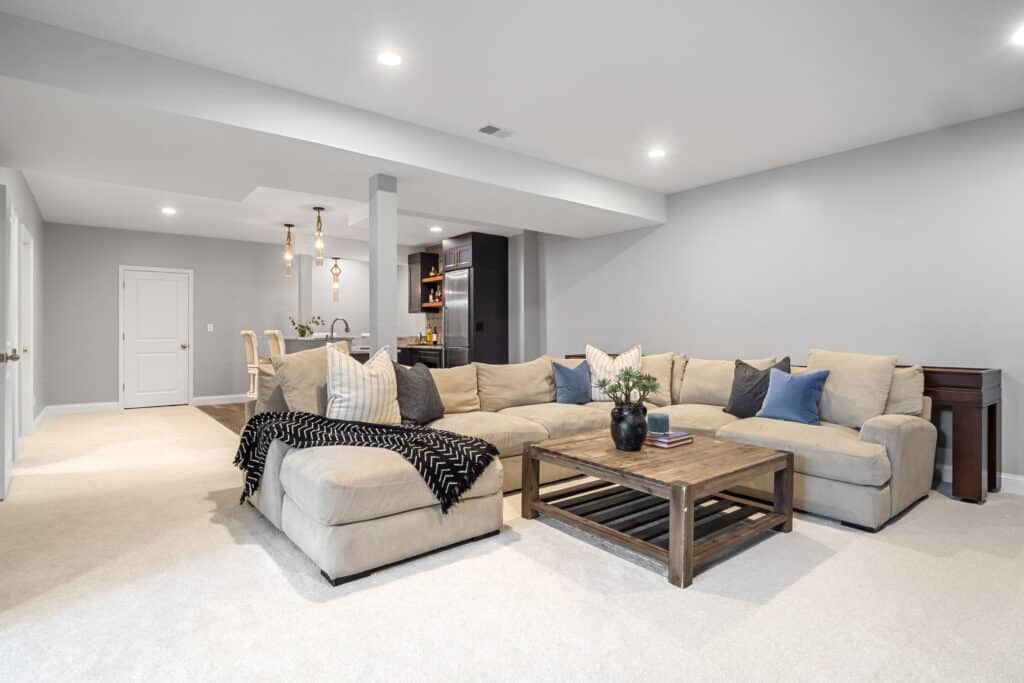Turning your unfinished basement into a liveable space opens up limitless possibilities. You can turn it into a bedroom for a loved one, a movie theater, an office, or even a rental. Not to mention, finishing your basement could also increase the perceived value of your house to St. Louis residents on the market for a new home. Can’t imagine your basement as a liveable space, or where to begin this transformation? Here are six things you need to do to improve your liveable space by finishing your basement.
1. Get the Measurements

Once you’ve confirmed that your basement fits the measurements, begin creating a blueprint. Think about where any walls would need to be built. Take into account any existing piping or appliances that need to be hidden.
Jot down key measurements for future reference so that you can make educated decisions about layouts and construction when you’re ready to renovate!
2. Insulate the Area
Cold air settles in the lower levels of the house, which can make a basement quite chilly. Liveable spaces should be functional for as many months of the year as possible. Increase the return on your investment by hanging out in the basement more often, thanks to proper insulation.
Insulation helps keep the room temperature controlled. Whether you have a space heater or furnace in the basement, properly installing insulation will help you save on energy costs.
In addition, insulation acts as a sound barrier. Therefore, you won’t hear the kids slamming the foosball table in the basement while you’re working upstairs, or you can get a workout in without being distracted by your significant other watching TV in the other room. Privacy and peace of mind are more attainable with a finished basement!
3. Protect the Area from Moisture Damage
More than any other part of the house, basements are the most prone to flooding. That’s why you must take the proper measures to prevent water damage or mold growth from developing in your basement.
First, you should make sure the foundation is properly sealed and that your yard is properly leveled to avoid water pooling. This will ensure that rainwater doesn’t leak into the basement.
Next, if necessary, install a sump pump to ensure that any potential standing water doesn’t accumulate and cause a larger issue. Lastly, make sure you have at least one air purifier present. Air purifiers help reduce the risk of inhaling any airborne pathogens that could pose potential health risks for you and your loved ones.
4. Have Proper Ventilation
Another critical way to ensure the health and safety of your family is through proper ventilation. Egress windows help let clean air in and out of the basement. They also let sunlight into the area, which helps naturally kills indoor germs.
The basement isn’t the only area of the house prone to indoor air pollution. Improperly sealed windows in bedrooms or areas of high-moisture content (such as bathrooms) are also prone to pathogens.
As a result, you may want to consider installing an energy recovery ventilator (ERV) throughout the house. Installing an ERV will be more cost-effective than just singling out the basement, especially if you’re looking to improve the retail value of your St. Louis house.
5. Pick the Right Flooring
The cold, hard floors of most basements don’t feel quite “liveable.” Turn your basement from cold to cozy with the proper flooring.
Even the best-sealed basements are still at a higher risk of water damage than the average bedroom. Therefore, carpeting and wood might not be the best options, as they could rot or grow mold in the event of a flood.
Tile or laminate are excellent materials for basement flooring. They are easier to maintain and are resilient in the face of potential water damage.
6. Give It A Paint Job
The right paint job can really set the mood. A fresh coat of paint can turn any dreary space into a bright and welcoming liveable space.
Since basements don’t tend to get a lot of natural light, you may want to select a lighter color. That way, any natural light and installed lighting can reflect off of the walls and brighten up the basement.
7. Install Lighting
Liveable spaces aren’t really liveable if you can’t see what you are doing. Therefore, it’s crucial that you consider your lighting options.
Some basements have minimal wiring for lighting and may turn into a more complex job. That’s why you should consider working with a licensed contractor who specializes in basement renovations.
They can help you achieve the aesthetics you desire while keeping functionality in mind, all while ensuring your house project is being done safely and correctly.




